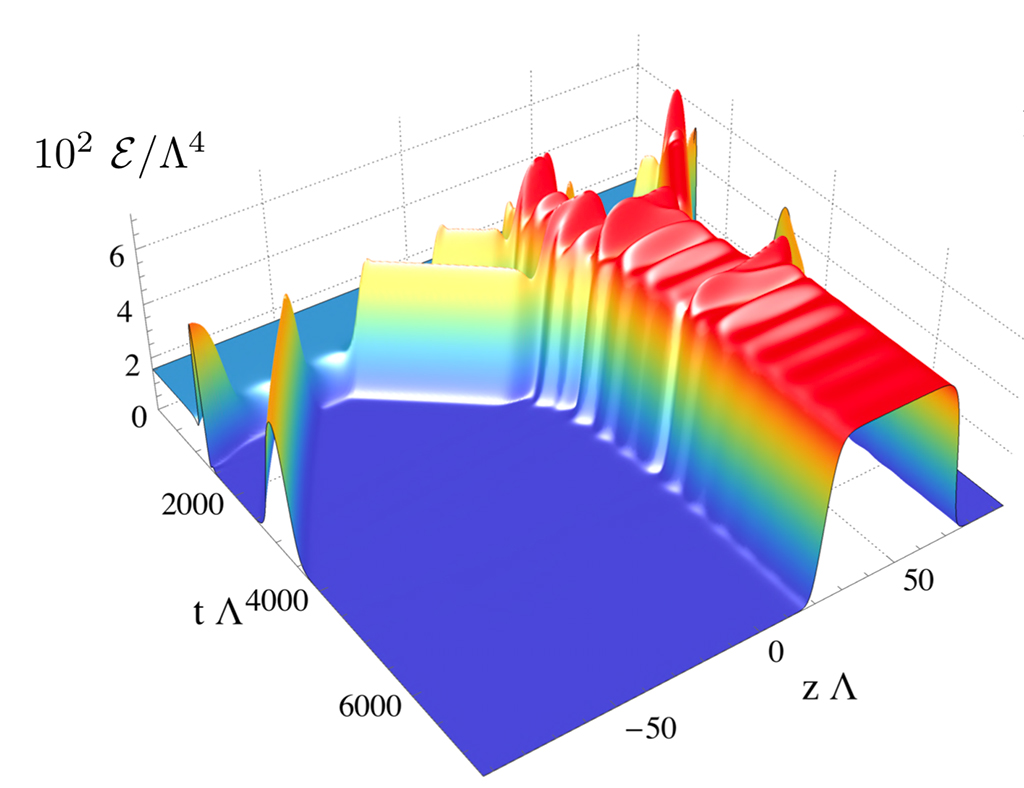David Mateos – Universitat de Barcelona (UB)
Phase transitions are ubiquitous in Nature. They are common in our everyday’s life (cooled water turns into ice) and they play a crucial role in particle physics (at high temperatures neutrons and protons melt into a plasma of quarks and gluons). Yet, following the dynamics in real time of a system undergoing a phase transition is extremely difficult with conventional methods, since the physics involved is typically out of equilibrium. For this reason we have used a string-theoretical tool known as “holography”, which maps the properties of quantum matter in our four-dimensional world to those of … a classical black hole in five dimensions! By solving Einstein’s equations in five dimensions we have determined the time evolution of the black hole horizon, and from this the evolution of the four-dimensional system across the phase transition. We have shown that a supercooled or superheated system evolves into a “phase-separated” state in which the two phases coexist in thermal equilibrium — as ice cubes floating in water or as a quark-gluon plasma coexisting with a gas of protons and neutrons. Moreover, we have been able to determine the shape of the interface between the two phases, since this corresponds to the shape of the black hole horizon in five dimensions.
